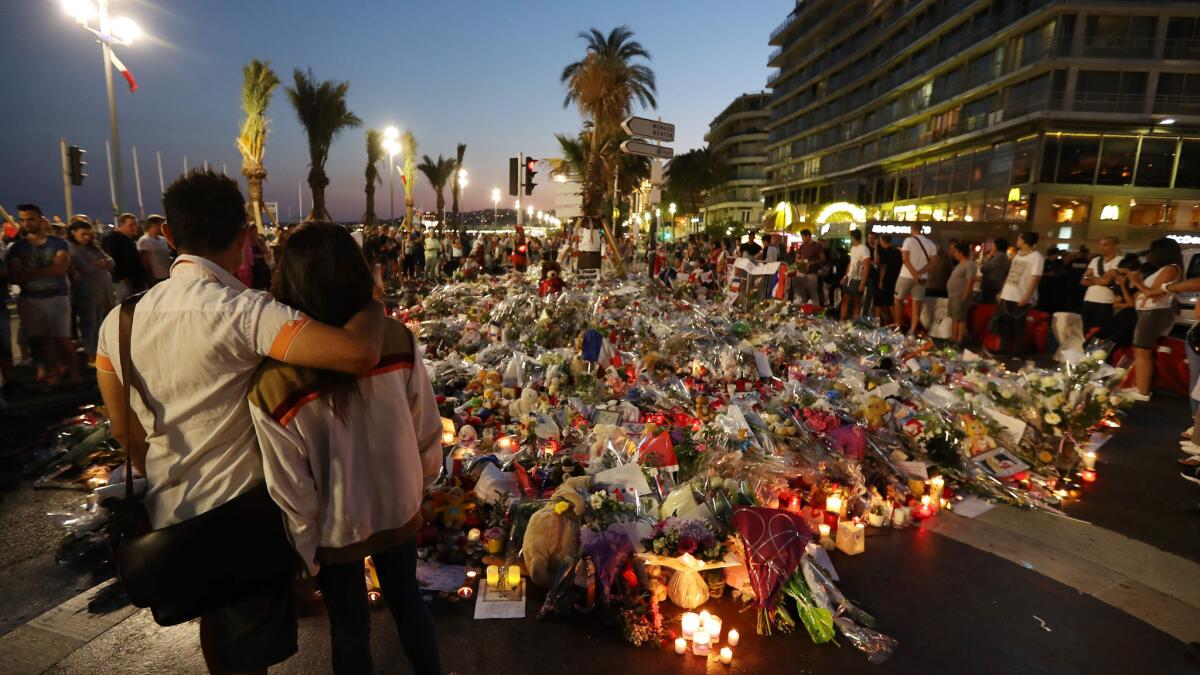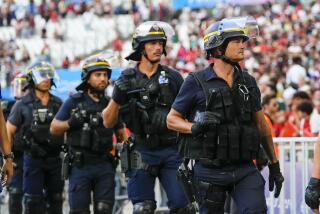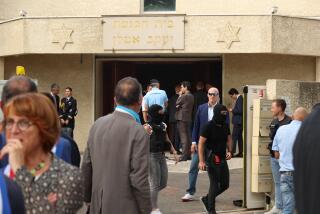Concerned over killers seeking ‘glory,’ French news outlets to stop publishing photos of terrorists

Mohamed Lahouaiej Bouhlel’s name and face were all over the French and international news media hours after he plowed his truck through the Bastille Day crowds in Nice, killing 84 and injuring hundreds more — just as the Islamic State follower knew it would be.
Why else leave his identity papers in the truck?
Amedy Coulibaly, who killed four hostages in an attack on a Jewish supermarket in Paris in January 2015, left a long, rambling video justifying his actions, and he shot a second selfie film shortly before shooting his victims.
Others have ensured their place in the annals of terrorism’s gruesome history by sending videos pledging their allegiance to Islamic State before carrying out attacks.
Now, several French news outlets have decided to rob Islamic terrorists of the posthumous “glory” they appear to seek.
Daily newspapers Le Monde and La Croix and news television station BFM-TV have announced they will no longer publish the photographs of those blamed for terrorist killings. Europe 1 radio said it would no longer broadcast their names, and global news broadcasters RFI and France 24 have enacted photo blackouts.
In an editorial headlined “Resisting the strategy of hate,” Le Monde said the battle against terrorism concerned “all elements of society.” It said its aim was to avoid “posthumous glorification” of terrorists.
“These reflections, these debates, these adaptations to the behavior of an enemy that uses all the tools of modern life against us, are necessary if we wish to smash the strategy of hate, if we wish to triumph while being true to ourselves,” it wrote in an editorial.
Jerome Fenoglio, the editor of Le Monde, told the Agence-France Presse agency that after the Nice attack “we were very uncomfortable” with photographs showing the killer flexing his muscles.
In a letter to journalists he detailed the restriction:
“This instruction covers mainly images taken from their daily life, of those, often taken by themselves, just before carrying out their act,” Fenoglio wrote.
Hervé Béroud, the editorial director of French television station BFM-TV, told AFP that his organization had been thinking about the ban “for some time.”
“The decision was speeded up by what happened in Nice, by the repeated tragedies,” he said, adding that he was concerned the reproduction of photographs “tends to put the terrorist and the victims on the same level”.
The question of whether publishing the photographs and names of terrorists glorifies them and plays into the hands of terrorists has divided opinion in France.
The debate comes after two Islamic State followers slit the throat of a Catholic priest as he celebrated morning mass at a church at Saint-Etienne-du-Rouvray in Normandy.

One of the attackers knew he would be quickly identified because he had told friends well in advance that he planned to attack a church, and his accomplice left behind his identification papers in a home where they were easily found by authorities.
Michel Field, executive news director at France Televisions, the state-run broadcast company, took a different view, however, saying in a statement that it is the media’s duty to inform and not indulge in “self-censorship and grand declarations of intention.”
Johan Hufnagel, editor-in-chief of Liberation, said his newspaper would not impose a blackout. “Publishing photographs of terrorists and glorifying them is not the same thing,” he told AFP.
Matthew Fraser, professor of communications at the American University of Paris, said it was an issue he confronted after 9/11, when he was editor-in-chief of the National Post in Canada. He felt the image ban was justified.
“In countries like the United States and Britain, there is an Anglo-Protestant culture that emphasizes ‘shame’ as a form of control. Shaming Islamic radicals doesn’t work because these terrorists want to die as martyrs. You can¹t shame someone after they are dead. Even those who are apprehended are impervious to shame. Their goal is glory. They want their horrific acts to go viral on the web.
“By imposing a blackout on the dissemination of names and photos, they are suffocating the fame-and-glory motivation. The problem is, however, that social media is much more powerful than a boycott by Le Monde or a French television network. Traditional media outlets are no longer gatekeepers. Their reactions are a thumb in the dike.”
Writing in Le Monde, Patrick Eveno, president of the Observatory for the Ethics of Information, declared the ban counterproductive.
“Society needs to understand why these things take place, what motivated the killers and how they arrived there. In the age of social media it [the ban] is also an illusion, and the media will quickly be accused of manipulation, conspiracy or bowing to the powers that be.”
Eveno said, however, that editors and journalists must collectively “think about the treatment of information related to terrorism.”
He added that “the public interest in being informed free of any political or ideological interference” was paramount.
Willsher is a special correspondent
ALSO
Syria’s Assad offers amnesty to rebels, who call it ‘meaningless’
The migrant crisis, as seen through the eyes of a human smuggler in Turkey
Intelligence trove provides details of Islamic State recruitment drive
More to Read
Sign up for Essential California
The most important California stories and recommendations in your inbox every morning.
You may occasionally receive promotional content from the Los Angeles Times.










